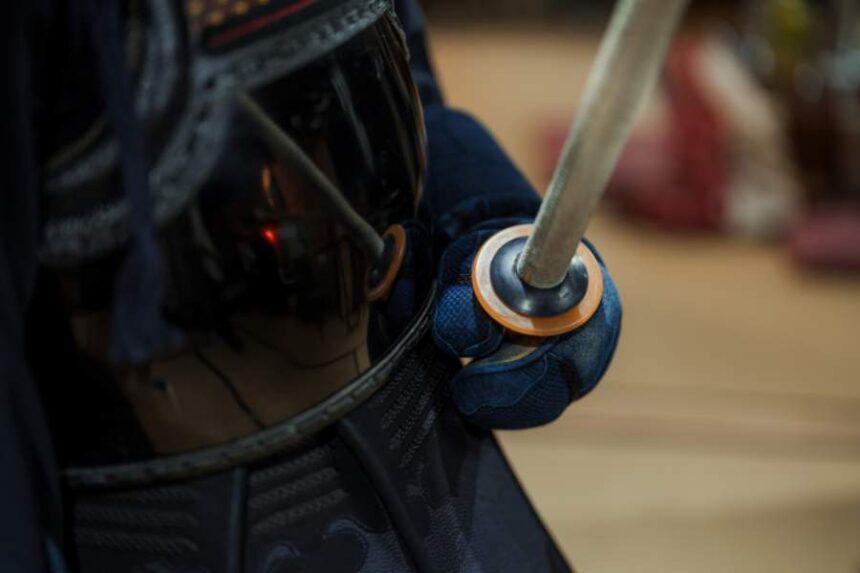Introduction
Collecting samurai swords is more than a hobby—it is a journey into history, tradition, and craftsmanship. Authentic Samurai swords, or katanas, are highly valued for their precision, beauty, and cultural significance. However, the market for samurai swords is filled with replicas and low-quality imitations. For collectors, understanding how to distinguish a genuine Katana from a reproduction is essential. This guide will help you identify authentic samurai swords, assess their quality, and appreciate their historical value.
Understanding the History of Samurai Swords
The Evolution of the Katana
The katana’s design evolved over centuries, beginning in the early Heian period (794–1185). Early swords were straight and modeled after Chinese and Korean weapons. As Japanese swordsmiths refined their techniques, they developed the curved, single-edged design that became the hallmark of the katana.
The katana peaked during the Kamakura period (1185–1333), when samurai warriors required weapons that could be drawn quickly for close combat. The blade’s curvature allowed for swift cutting and fluid movement, making it ideal for battlefield engagements.
The Role of the Swordsmith
Traditional swordsmiths were highly regarded artisans. They followed strict protocols in selecting materials, forging blades, and tempering edges. Each sword was considered a work of art, embodying the swordsmith’s skill and the warrior’s spirit. Understanding this history is crucial for identifying authentic swords.
Key Features of an Authentic Samurai Sword
1. High-Carbon Steel and Folding Process
Authentic samurai swords are made from high-carbon steel known as tamahagane. This steel is produced by smelting iron sand and charcoal in a clay furnace (tatara). The resulting steel is folded multiple times to remove impurities and create a layered structure.
The folding process gives the blade its strength and flexibility. A genuine katana will have a visible grain pattern (hada) on the blade’s surface, reflecting the layers created during folding.
2. Differential Hardening and Hamon Line
Authentic katanas undergo a process known as differential hardening. Swordsmiths coat the blade’s spine with a thicker layer of clay and the edge with a thinner layer. When the blade is heated and quenched, the edge hardens quickly while the spine cools more slowly, creating a balance of hardness and flexibility.
This process creates a visible temper line (hamon) along the blade’s edge. The hamon should appear as a distinct, wavy pattern rather than a uniform or machine-like line.
3. Signature (Mei) on the Tang
The tang (nakago) is the portion of the blade hidden within the handle. Genuine samurai swords are often signed by the swordsmith on the tang. The signature (mei) includes the smith’s name, the date of forging, and sometimes the sword’s intended purpose.
Collectors should carefully examine the mei for authenticity. Reproductions often feature poorly etched or inconsistent signatures, whereas genuine swords will have precise and consistent markings.
4. Proper Weight and Balance
A real katana is perfectly balanced. The weight distribution allows for smooth handling and precise strikes. An authentic sword should feel balanced when held at the hilt, with the blade’s weight naturally guiding movement.
A sword that feels too heavy, light, or unbalanced may be a sign of poor craftsmanship or a replica.
5. Fittings and Handle Wrapping
An authentic katana’s fittings (koshirae) are crafted from high-quality materials, such as brass, iron, or silver. The handle (tsuka) is wrapped in silk or leather over ray skin (samegawa). The wrapping should be tight and symmetrical, with no gaps or loose ends.
The sword guard (tsuba) often features intricate designs representing nature, mythology, or family crests. These designs should be carefully engraved, not stamped or machine-made.
How to Evaluate the Condition of a Samurai Sword
Blade Integrity
Examine the blade for any signs of rust, cracks, or chips. Authentic swords are well-maintained and show minimal signs of damage. Minor scratches or wear marks are acceptable for older swords, but structural damage indicates poor quality or improper care.
Polishing and Edge Sharpness
Authentic katanas are polished by hand using specialized stones. The blade should have a mirror-like finish without uneven spots or cloudy areas. The cutting edge should be razor-sharp but show no signs of grinding or artificial sharpening.
Alignment and Straightness
An authentic katana’s curvature should be smooth and even. Any bends, kinks, or uneven lines suggest poor craftsmanship or damage.
Identifying Fake or Low-Quality Swords
Machine-Made Blades
Many replicas are made from stainless steel or low-quality metals. These materials are prone to rusting and lack the strength and flexibility of high-carbon steel. Machine-made blades also lack the layered grain pattern and hamon line characteristic of authentic katanas.
Acid-Etched Hamon
Some replicas feature a fake hamon line created through acid etching. An acid-etched hamon will appear uniform and shallow without the natural variation and depth of a genuine hamon.
Poorly Made Fittings
Replicas often use plastic or low-grade metals for the fittings. Loose or uneven wrapping on the handle and rough edges on the tsuba indicate low-quality production.
Where to Buy Authentic Samurai Swords
For serious collectors, purchasing from a reputable dealer is essential. Avoid buying from online marketplaces with limited information or vague descriptions. Look for sellers with detailed photos, authentication certificates, and a clear history of the sword’s origin.
For a trusted source of authentic samurai swords, visit Samurai Sword Store. Their collection includes traditionally crafted katanas made using authentic materials and methods. Each sword comes with detailed documentation, ensuring its authenticity and historical value.
Caring for Your Samurai Sword
Regular Cleaning
Use a soft cloth and specialized oil to clean the blade regularly. This prevents rust and keeps the steel polished.
Proper Storage
Store your katana in a dry place away from direct sunlight. The blade should be sheathed in its scabbard (saya) to protect it from moisture and dust.
Professional Maintenance
Seek a professional sword polisher if the blade becomes dull or damaged. Attempting to sharpen or repair a Katana without proper training can cause irreversible damage.
Conclusion
Collecting samurai swords is both an art and a responsibility. Authentic katanas represent centuries of craftsmanship, tradition, and cultural significance. Understanding the hallmarks of a genuine sword—such as the hamon line, signature, and folding pattern—empowers collectors to make informed decisions. A well-maintained katana reflects not only the swordsmith’s skill but also the owner’s respect and care. Whether you are a seasoned collector or a newcomer, investing in an authentic samurai sword connects you to the samurai legacy and the timeless art of Japanese sword-making.




